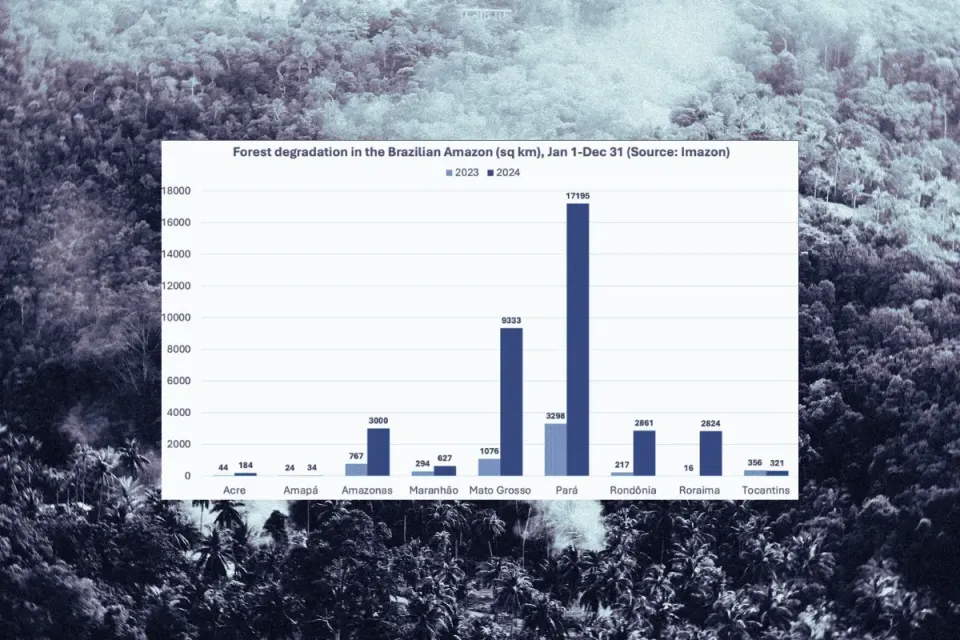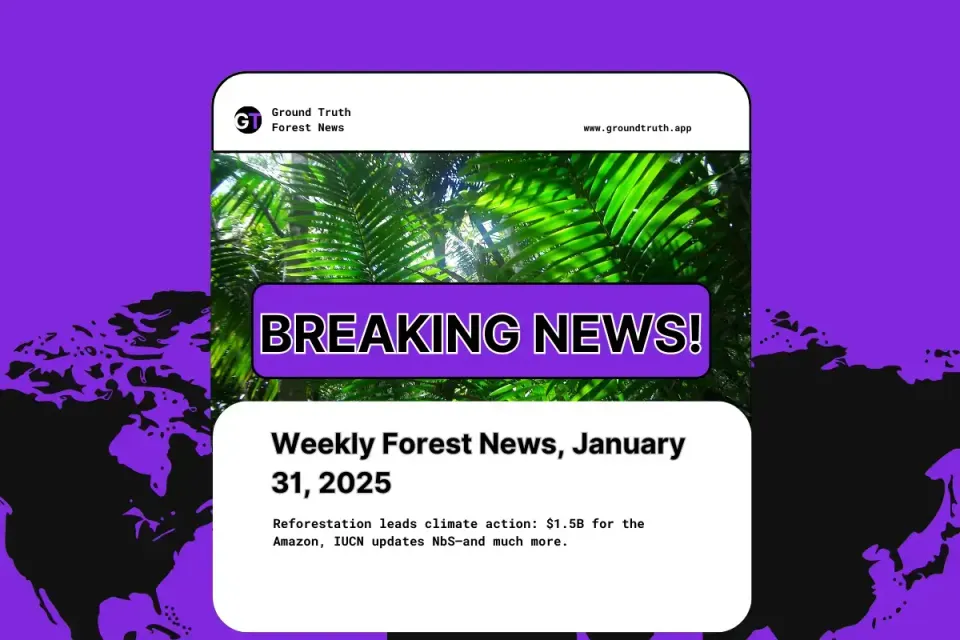Fishers & Scientists Restore Seaweed on Chilean Coastline
The aim of the project is to collaboratively create a seaweed management strategy to repopulate the seabed...

This story was originally published by Barinia Montoya on Mongabay. The original Spanish version was first published in here on Aug. 21, 2024.
- Scientists and fishers in Chile are repopulating a coastal area exposed to high levels of pollution with two species of seaweed that were once abundant in the area.
- The disappearance of the seaweed has formed ocean deserts. Its absence has not only reduced biodiversity but also deprived the area of the ecosystem services that these plants provide.
- Despite considerable challenges, the project already shows signs of hope.
At the age of 15, Elvio Lagos took his first steps toward becoming a shellfish diver. He began helping his father catch conger eels and shellfish in Caleta Horcón, a cove in central Chile not far from the copper-centered industrial area of Quintero-Puchuncaví, dubbed as one of the country’s so-called “sacrifice zones” due to high pollution levels.
At 18, Lagos decided to become a fisher. This profession ensured he made enough money to contribute to home expenses, because “at that time, we could fish 150 kilograms [330 pounds] of limpets, snails, piure [Pyura chilensis, a sea creature that resembles a rock with red flesh inside] and sole,” the now-56-year-old told Mongabay Latam.
Back then, the sea was so abundant that he and his companions could get around 600 clams to eat on their way home. “The sea was full of catch and there was seaweed everywhere,” he said. But things are different today. “It’s sad to see how the seascape has changed. There’s no seaweed anymore.”
To confront this new reality and restore the area, a group of scientists, led by Loretto Contreras, a professor of biological sciences at Chile’s Andrés Bello National University, is working with the fishers of Caleta Horcón. The aim of the project is to collaboratively create a seaweed management strategy to repopulate the seabed with giant kelp (Macrocystis pyrifera) and Chilean kelp (Lessonia spicata) — two species that are key to the ecosystem’s health.
Despite significant challenges, there have been some encouraging signs: The first new populations are already emerging.
The power of seaweed
In the ocean, seaweed is a vital provider of life, used by many species as a refuge and for reproduction. Seaweed also absorbs enormous quantities of carbon dioxide, acts as a natural barrier that absorbs the force of waves and has been shown to be “very efficient in removing various pollutants from seawater,” according to Bernardo Broitman, a researcher from the Coastal Social-Ecological Millennium Institute, known as SECOS.
At the same time, seaweed has increasing commercial value. In the last 20 years, Chile has established itself as a top-10 seaweed producer globally and the largest in South America, with most of it exported. Seaweed can be used to make a variety of products, including paints, cosmetics and toothpaste. The global seaweed market is projected to grow from $7 billion in 2023 to $16 billion in 2033.
This worries scientists because overexploitation of seaweed has created large “deserts” on the Chilean coast, harming biodiversity and robbing coastal communities of important ecosystem services. If the seaweed disappears, “so will their absorption and dissipation of the energy of the waves hitting the coast, which mitigates coastline erosion,” Broitman said. “What would we do without these species’ discreet and essential work as collectors of household waste and sewage?”
The purifying abilities of seaweed are especially important in places like Caleta Horcón, home to an industrial complex housing an oil refinery, thermoelectric power plants and metallurgical companies, among other establishments.
To address these threats, in 2015, Contreras and her team of scientists began to research how to use giant kelp to restore areas that had been denuded of seaweed and contaminated by industrial runoff.
Science and local knowledge
First, Contreras and her team had to meet the fishers and get them on board with their idea. “It was very important because the fishers had never grown seaweed in that area,” said Contreras, who is also the director of the Laboratory of Ecology and Molecular Biology in Seaweed (LEBMA) at Andrés Bello National University, located in Santiago.
The species became a true “oil-eating” seaweed, she said, because the giant kelp cultivation project “was a total success,” despite impacts of oil spills in the area between 2014 and 2016.
Among the results of the study, the scientists found that certain animal species began to appear with the kelp and, in addition, “the plants grew up to 10 meters [33 feet], despite the polluted water. It was all very impressive,” Contreras said.
In 2023, Contreras returned to the area, this time supported by a team of researchers from SECOS and a company called Bitecma, which does marine research. Their objective is to repopulate Caleta Horcón with two species: giant kelp and Chilean kelp.
However, there have been numerous challenges to achieving the task.
At the start of the project, scientists established some key issues. The first was the necessity for preliminary laboratory work before “sowing the sea,” which consisted of testing different seaweed growth methods. However, success in the laboratory does not necessarily guarantee the same outcome in the field, which carries the additional challenge of working in areas with high exposure to waves, according to Contreras.
Macrocystis and Lessonia live in fairly oxygenated areas “where the sea is rough, and therefore our techniques must resist the problem of mechanical forces,” said Nelson Lagos, the director of the Center for Research and Innovation for Climate Change at Santo Tomás University in Santiago.
Lagos and Contreras agree that reproductive material is key to the current project. The spores, which are the reproductive cells that divide to form new individuals, are in very poor condition. “They’re in a bad state because they’re subjected to anthropogenic environmental intervention. It’s like asking a dead tree to bear fruit,” Contreras said.
Technology poses yet another obstacle. According to Contreras, they use sustainable plastic-free devices to repopulate kelp, as well other tools, such as drills, which cost several million Chilean pesos (equivalent to several thousand dollars). Despite these hindrances, Contreras and the research team persist, and the first hopeful results in this important project have already emerged. The fishers await further results with hope.
Delicate laboratory work
When the researchers arrived at Caleta Horcón, they met with the fishers to pool their scientific and local knowledge. The fishers who participated received training to give them theoretical knowledge about the two species used for repopulation. In turn, they provided their boats and local knowledge to support the project delivery.
Meanwhile, scientists manually collected reproductive tissue from the two species of seaweed present in the cove. The wet material was then transported in thermal containers to the seaweed culture laboratory to carry out reproductive operations. “A low temperature during transportation is of the utmost importance to prevent spores in the reproductive tissue from becoming unviable,” Contreras said.
There, the reproductive tissues, called sori, were washed with plenty of potable water to remove dirt and unwanted organisms, such as spores of other algae or small invertebrates. The sori were then subjected to a drying period in trays covered with absorbent paper and wrapped in aluminum foil, in total darkness.
After around five days, the spores of these two species began to germinate, and once they grew into young specimens, the fishers, together with the team of researchers, began planting in Caleta Horcón.
Repopulation begins to yield results
The techniques used so far by the group of researchers are rope seeding and indirect seeding of spores onto natural substrates.
Broitman, who participated in the project, explained that the first technique consists of taking a rope tied to four small concrete pillars to the bottom of the sea, on which a mesh with spores is attached. This, he said, “is intended to make the seaweed grow and produce a large amount of spores for repopulation.”
“The goal is for the seaweed to grow from the spores and reach such a size that they can reproduce and generate repopulation patches,” Contreras said.
The second technique is to use an improved bio substrate. Nelson Lagos explained that the substrate is a “hard surface” that the kelp settle on, necessary for early-stage development. To ensure that the substrate delivers the best growth conditions for the seaweed, the team of scientists is “artificially” creating that base using an organic resin mixed with carbonate.
This material comes from oyster shells and shells from the Chilean mussel (Mytilus chilensis). “We use these two substrates, which go through a process of washing, grinding, drying and sieving,” Lagos said.
The trial-and-error process at this stage is long, but once the best resin is obtained, Contreras transfers the spores to the improved bio substrate, to later transfer them to the sea.
At the last observation, after two months of crop repopulation, there were more than 2,000 repopulated seedlings between the two species. Those of Lessonia spicata had a reproduction success rate of 60% of the repopulation. “They are on average over 4 centimeters [1.6 inches] long, while those of Macrocystis pyrifera measure over 40 cm [16 in],” Contreras said. Reproductive material is still scarce, but there are already glimpses of “a likelihood of success,” she said.
The project results have given hope to the fishers of Caleta Horcón. “It’s lovely to see how this managed zone, which we’re really looking after, is recovering,” said Elvio Lagos, who hopes to once again see species thrive, just like in his childhood.
This article was first published in Spanish here on Aug. 21, 2024.
Montoya, B. (2024, October 18). Fishers & scientists unite to restore seaweed populations on Chilean coast. Mongabay Latam. Republished under a Creative Commons Attribution-NoDerivatives 4.0 International License. with minor changes to images and formatting. Originally published in Spanish on August 21, 2024.




